When last we left off, we were sitting patiently under a shade tree waiting for the gravel and cement trucks to appear at Bentouryah. We hope you enjoyed your break, because the real work is just about to begin...
As promised, Monsieur Djouma sent representatives from his fleet of dump trucks that, amidst great clouds of red dust and rumbling, made their deposits of sand and gravel in big piles at Bentouryah.
Several tons of cement were purchased, and the water truck came to fill the cistern. These trucks would be the last machines to be involved in the work at this stage - the rest was literally pure manpower. Before our lack of funds caused our work to pause, Amadou the brickmaker would form thousands upon thousands of bricks using only his shovel, a brickmold, a strong back, and loads of patience for working in the subtropical heat. After mixing all the ingredients, Amadou quickly shoveled the heavy gray mixture into his brick mold with smooth, decisive, well-practiced strokes. He then tamped down firmly on the thing, flipped it over, and carefully slid away the mold, leaving his perfectly-formed brick to dry in the sun. The process was not unlike the final steps of making a pineapple upside-down cake, which, while tasty, is considerably less impressive than the bricks.
Anyway, after three days, Amadou had made so many bricks, he needed more cement and took a day or two off while we repeated our purchasing steps.
The final product was rows and rows of beautiful bricks, baking away in the sun and waiting to be made into Nimba's perimeter wall. We are immensely excited about these first steps in building the Nimba Center, and we are especially proud that each and every brick was made possible by donations from our community of African dance practitioners, artists, environmentalists, humanitarians, activitsts and supporters. While most of us do not live in Guinea, we are still engaged in a powerful community-building process because our funds come from you, our friends and supporters, and not one wealthy single source. We think it makes the Nimba Center even more special of a project that we have to work together to make it happen.
While we are thrilled with our progress so far, we're a long, long way from completion, and we need your help more than ever to keep our construction projects ongoing. Our goal is to finish the perimeter wall, a necessary security measure, complete our two existing houses so that our workers have a place to stay, and begin building the little cazas that will house Nimba's guests.
We hope to have enough structures built by next winter so that visitors can escape the bustle and fumes of Conakry and focus on dance and drum at Bentouryah while they take in the lovely mountain vistas and enjoy its fresh air and cooler breezes. Donate here or contact us to make your contribution to our global community effort. We need your support now! Well, it's been a hard day's work. Stay tuned for next week when Nimba hits the road, and check out our traveling tales, photos of some of Guinea's prettiest places, and find out how three dancer-nurses from Arizona made giant steps for Nimba. Until then, as they say in Susu, Oooooo! (Goodbye!)
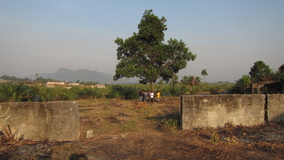 Question:
What do gravel, water, cement, and palm wine all have in common?
Answer:
They were all essential ingredients in the first phase of building the Nimba Center!
This past fall, Nimba raised over $2,000 from its amazing community of supporters (commence thunderous applause and jubilant cheers) to get down to brass tacks and begin construction at Bentouryah, Youssouf's land and the future home of the Nimba Center. Your donations were both essential and timely as Nimba was threatened with losing our pretty plot of land if we didn't start building right away. Thanks to you, Nimba was able to avoid that heartbreak and, with great excitement and plenty of noisy haggling in Susu and French, broke ground at Bentouryah and started to build. Our first task was to clear the land with a controlled burn, as is the traditional technique in the area. Never fear, we preserved the pineapple, coconut, and banana plants, but the slow, crackling fires swept the ground of aggressive brushes and stymied the growth of certain palms, which are apparently quite treacherous and like to eat cement walls if left untended. And the final product of the burn:
Our next task was to arrange for materials. The "Bentouryah Crew," as we came to loosely refer to ourselves, set out from Bagatai with our brickmaker, Amadou, to make our inquiries at Dubreka, a bustling junction town nearby Bentoruyah. We made the typically long and mildly arduous journey of potholes, traffic jams, repetitious car trouble, and the swelter of tropical sun and diesel fumes and eventually arrived at the busy lots and perilous intersections of Dubreka to find our contractors.
After more than a few stops, hasty cell conversations, cold drinks, and gallons of radiator fluid, we finally parked the van near a likely-looking row of dump trucks. Within moments of stepping out from the vehicle, Youssouf had a dozen able businessmen crowded around him, each shouting their estimates and terms for the work, while Annie hastily scribbled each number as best she could in her notebook using her fair-to-middling comprehension of French. After a reasonable amount of deliberations and consultations with Fode, our in-house construction adviser and Youssouf's childhood best friend, the terms were agreed upon. We shook hands with Monsieur Djouma-the-cement-guy, counted out the required amount of Guinea francs from the Nimba purse, and returned to Bentouryah to wait for delivery of the goods.
We decided a pit stop at a favorite palm wine spot was in order, and so we wound our way back on twisty, dusty roads through the bucolic, tree-covered villages tucked in the hills. The palm wine (tungui) from this area is known to be the sweetest and most refreshing around. They tap it directly from the trunk of the palm trees, where the pale, milky ambrosia delicately ferments. In Conakry, the slightly lemony, slightly yeasty delight might be mixed with sugar to sweeten the deal, but up here, it's pure, cool, refreshing, and best when drunk right from the mayonnaise jar (or, in Morla's case, a repurposed Coyah water bottle). Well, seeing as how the palm wine spot is the perfect place to pass a little time, we'll leave you there for now to enjoy the sunset view of Bentouryah, watch the water from the tidal stream fill up and sparkle through the trees, and enjoy a few swigs as you ease into the weekend. We'll be back next week to share the fruits of our labors in Part 2. In the meantime, keep the work at Bentouryah going by donating today (After you finish your palm wine, of course!)
a mini lesson in energy and art
Welcome back to Bagatai, everybody! This week, Nimba shares tales from this year's kids' arts program. In the program, children explored the power of the sun's energy through a fun art project and received a solar-powered light and hard-to-come-by school and art supplies, thanks to some amazing donations from Nimba's community of supporters. The art project turned even more educational as everyone present (from age 4 to 30) put their French language skills to the test. On y va!
First, we talked about three different ways we get energy from the sun. The first is food energy: energy from the sun is transformed by plants into things we can eat. Next, we talked about how the sun's energy can make electricity, which they already know about from the solar panels from Nimba's installation project last year. Finally, we discussed how we can also use the energy from the sun to make art.
Bagatai's residents can expect a few hours of grid power each day, but it is unreliable and doesn't always come in time for study hours. While parents have a few solar lanterns, these are often needed in the kitchen or other areas and children don't necessarily have easy access to lights to study by. This particular solar light and charger is kids-only to ensure they have a little light to study by.
light, water, action!
Some of us seemed skeptical at first about making art with sunlight, but we went ahead and collected leaves and objects we liked and arranged them on photosensitive paper.
Once the paper changed colors, we submerged in water for twenty seconds (counted by everyone en francais, thank you very much!) We then laid them to dry in the bright, subtropical sun. After a few minutes, our designs were ready for decorating, aka "glitter madness."
As you can see, the final products were sparkling and lovely, just like the smiles.
After the projects, students from age 4 to 20 received notebooks, pencils and pens to accompany their studies, as well as colored pencils, markers, crayons, and other art supplies they can use for their creative energy. "Bon cadeau," ("good gift") they said, and we quite agree!
Thanks to our donors, Nimba was able to make an additonal donation of study supplies to a local grade school -- named for our very own Youssouf Koumbassa! The response to the school and art supplies was so wonderful, we plan to make it part of every Nimba trip.
Tune in next week for a glimpse of the construction process at Bentouryah, the future home of the Nimba Center. A tout a l'heure, and enjoy your weekend!
|
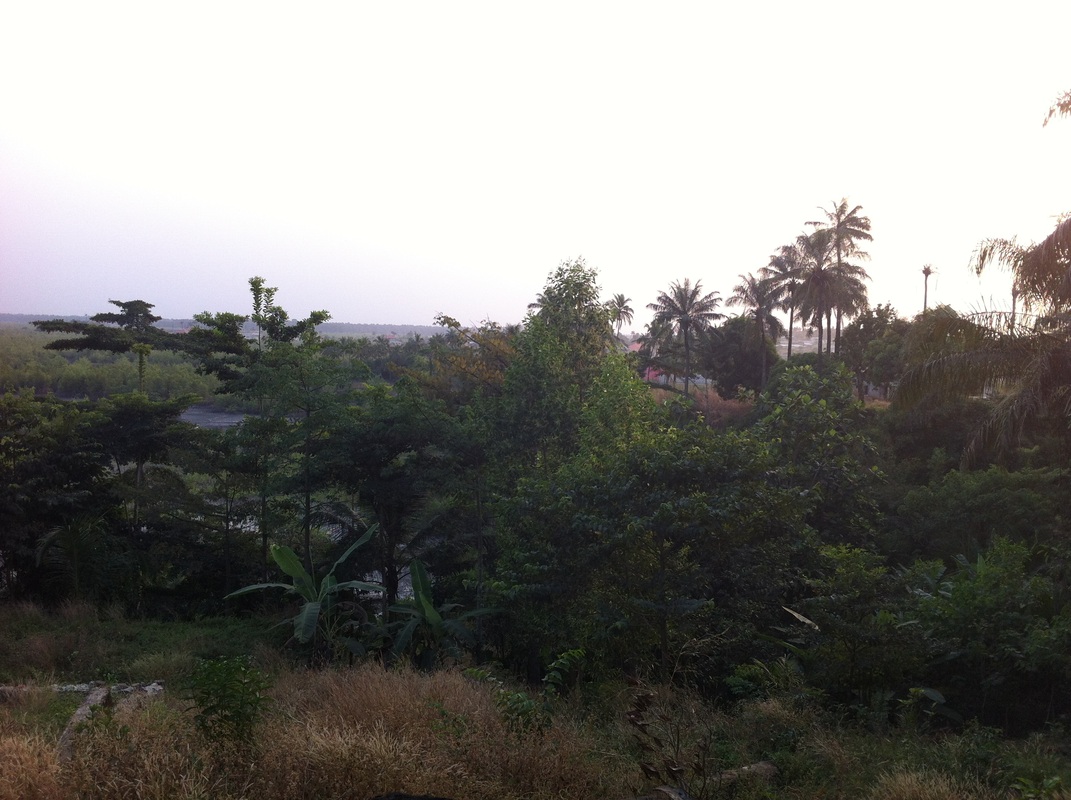
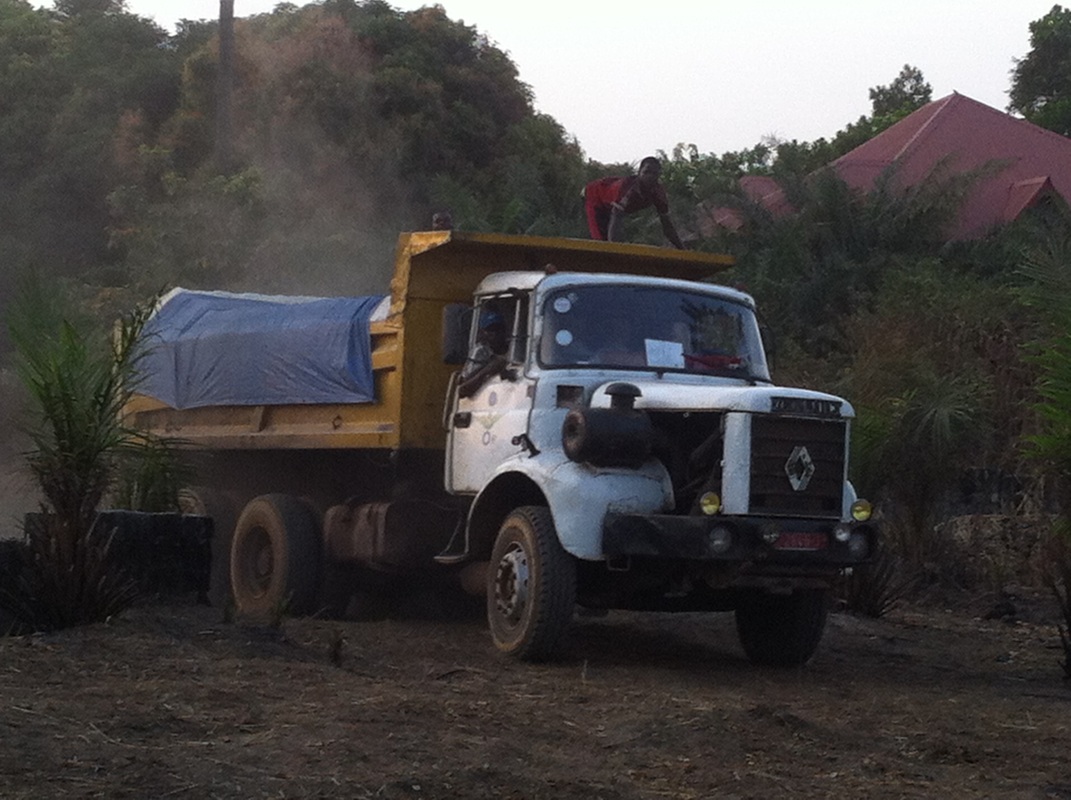
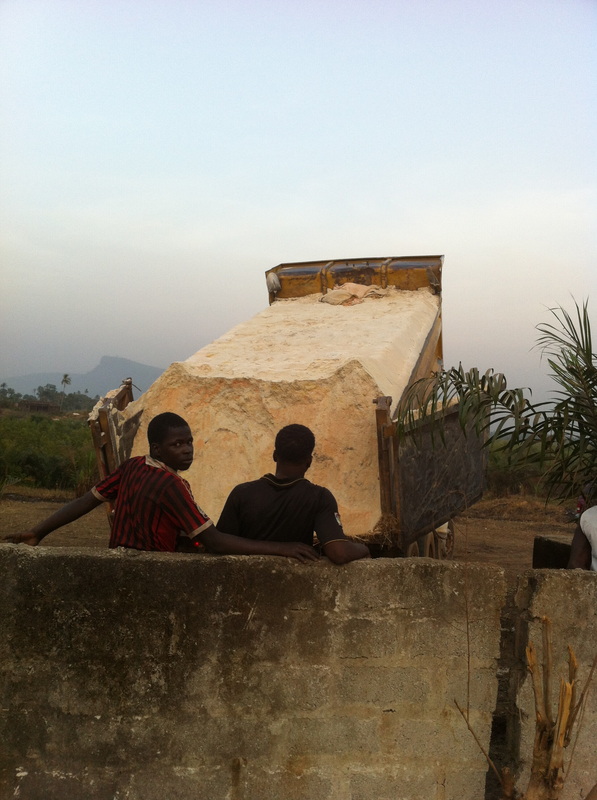
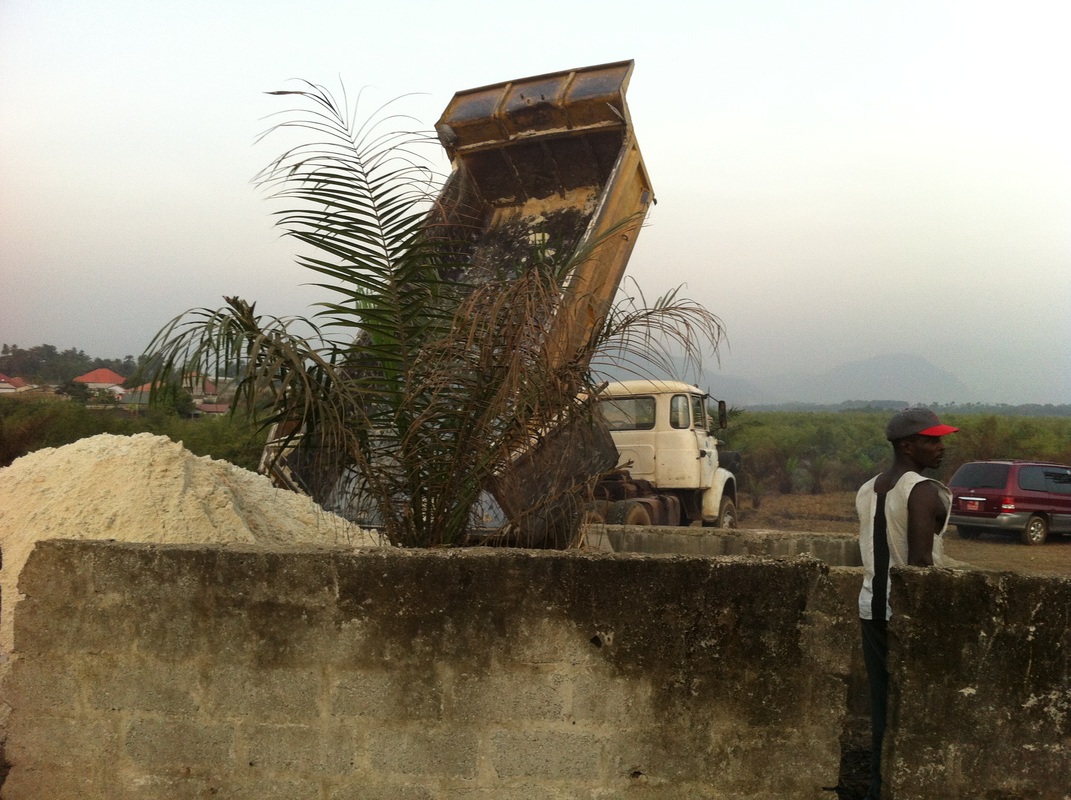
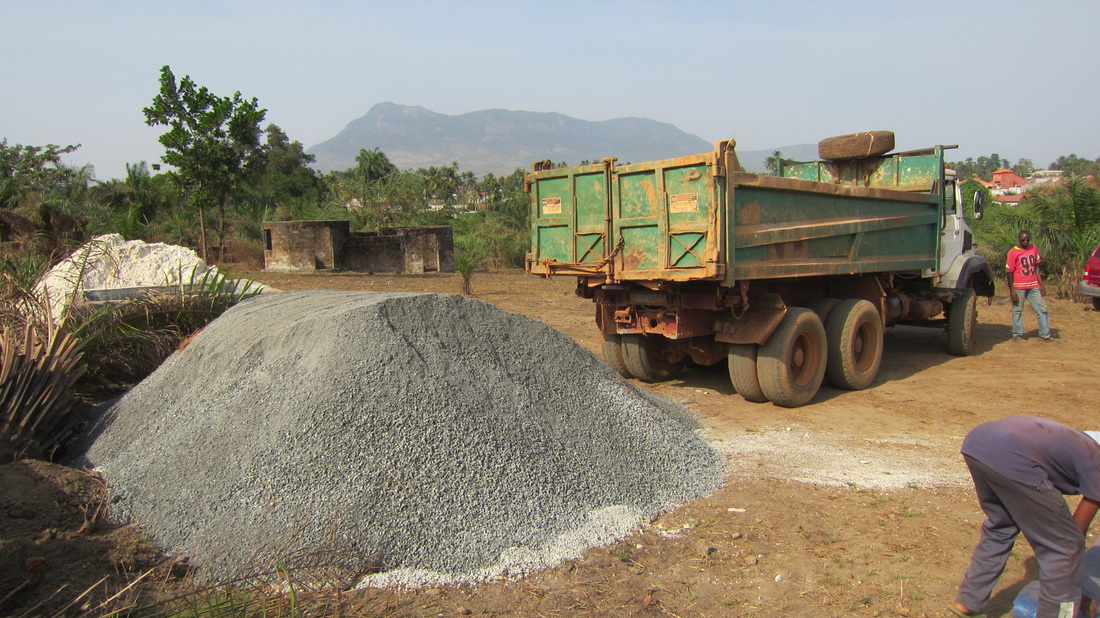
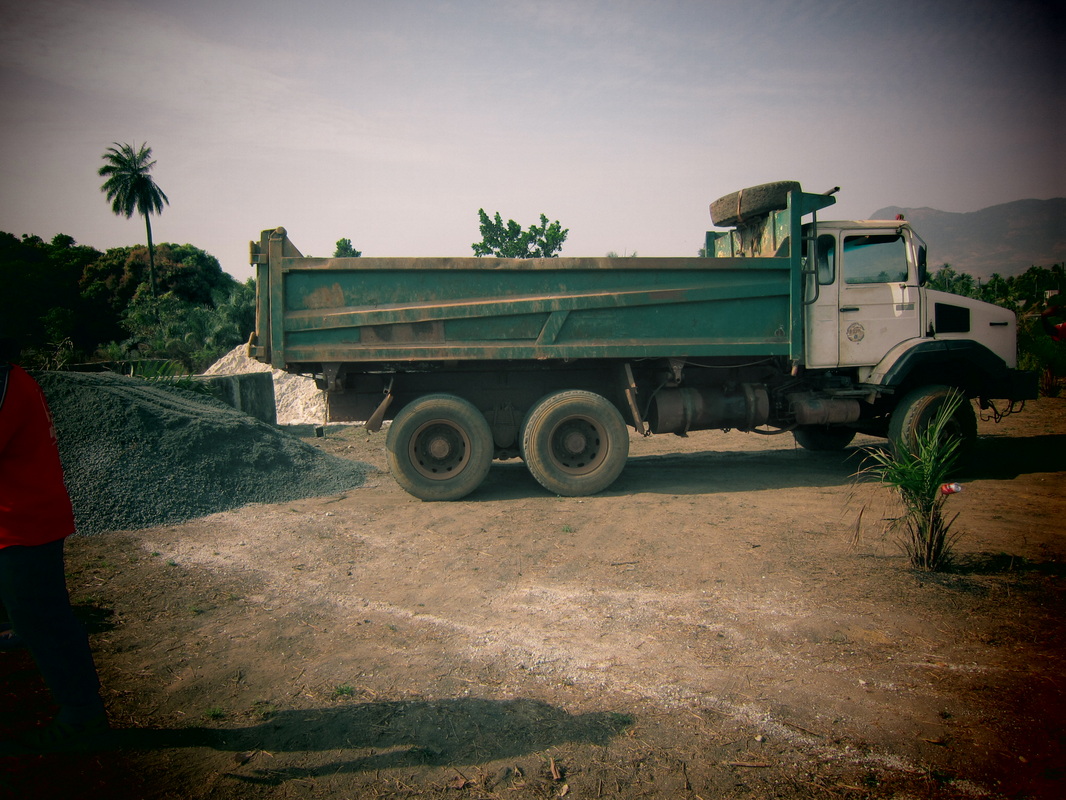
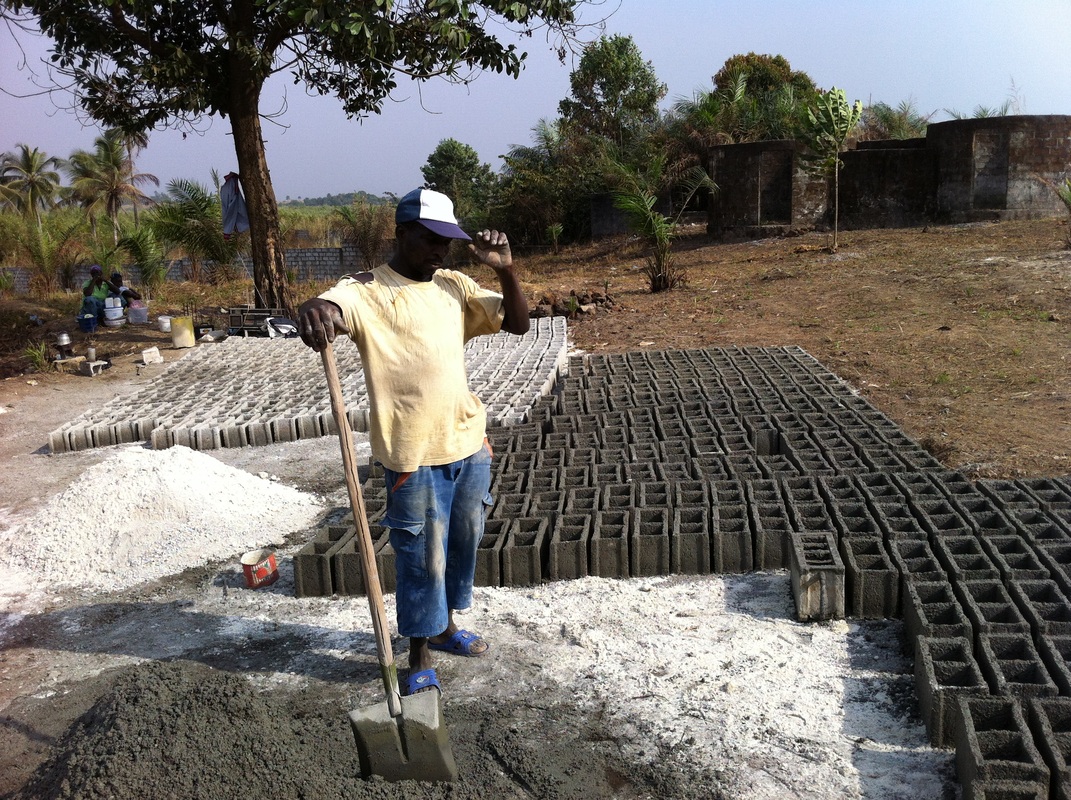
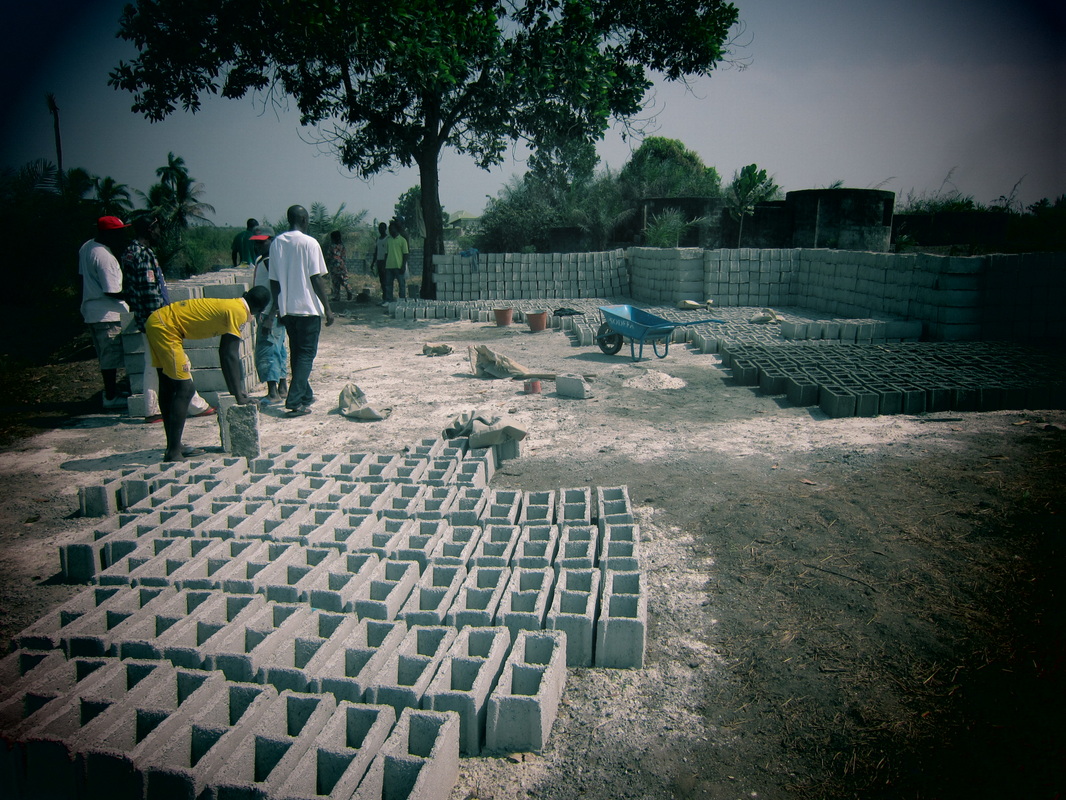
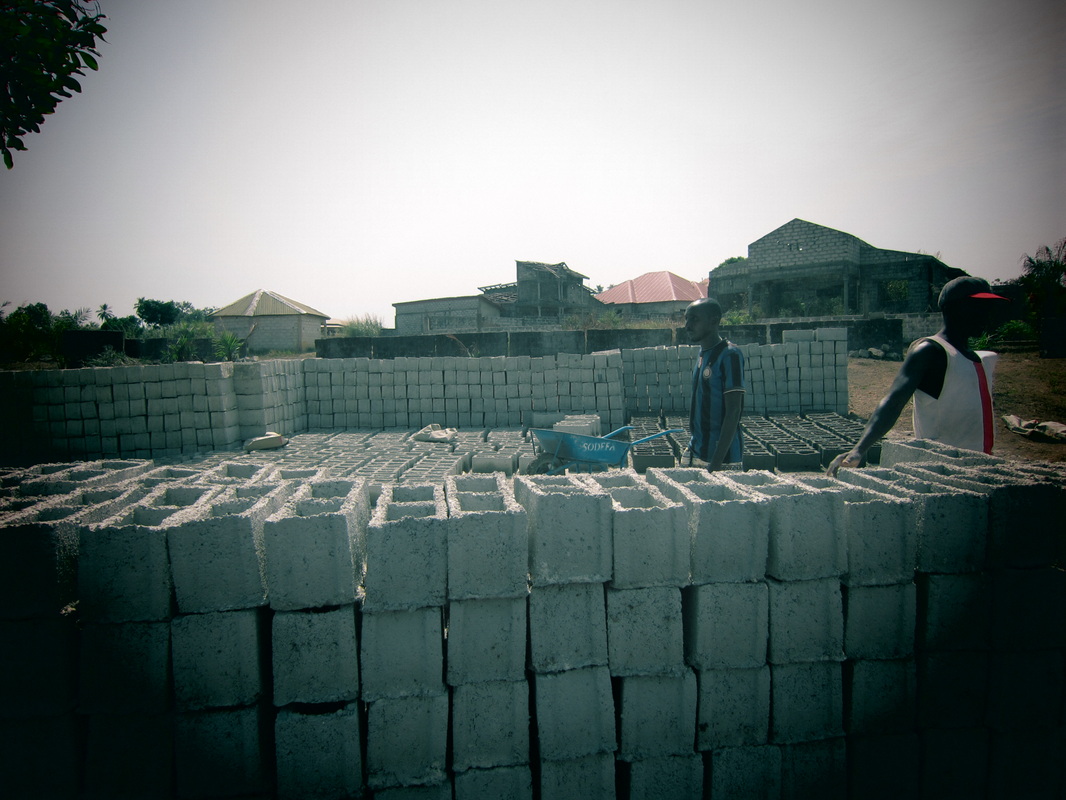
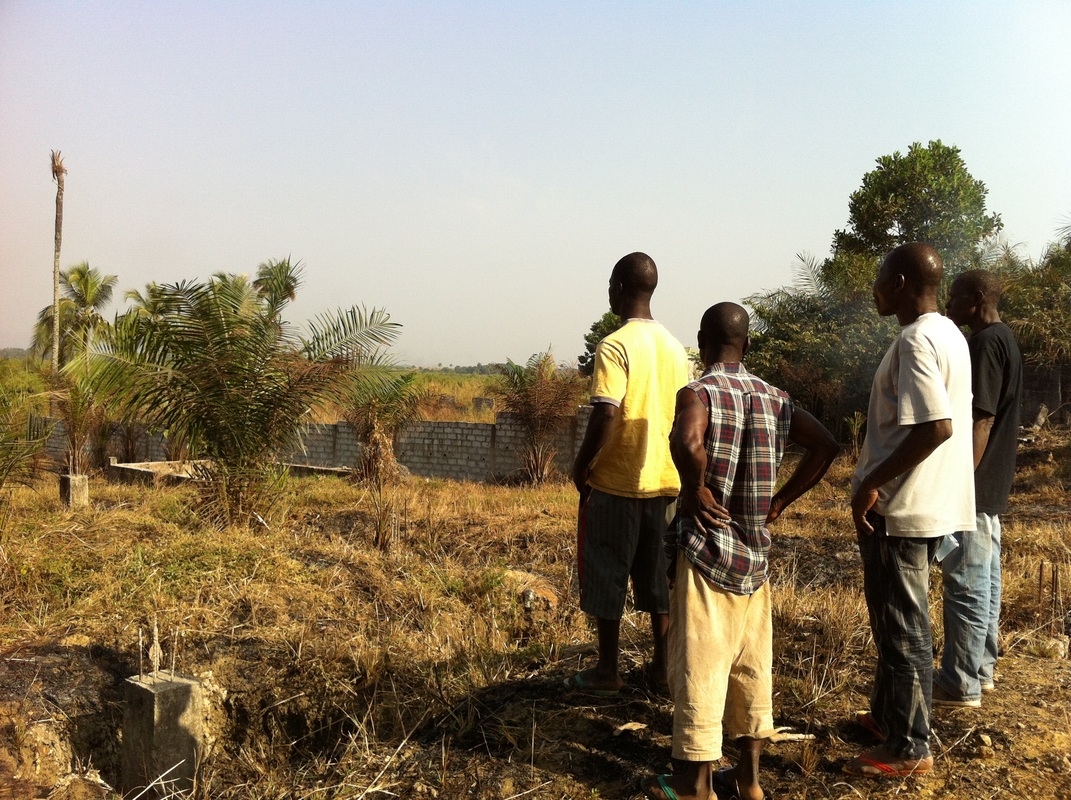
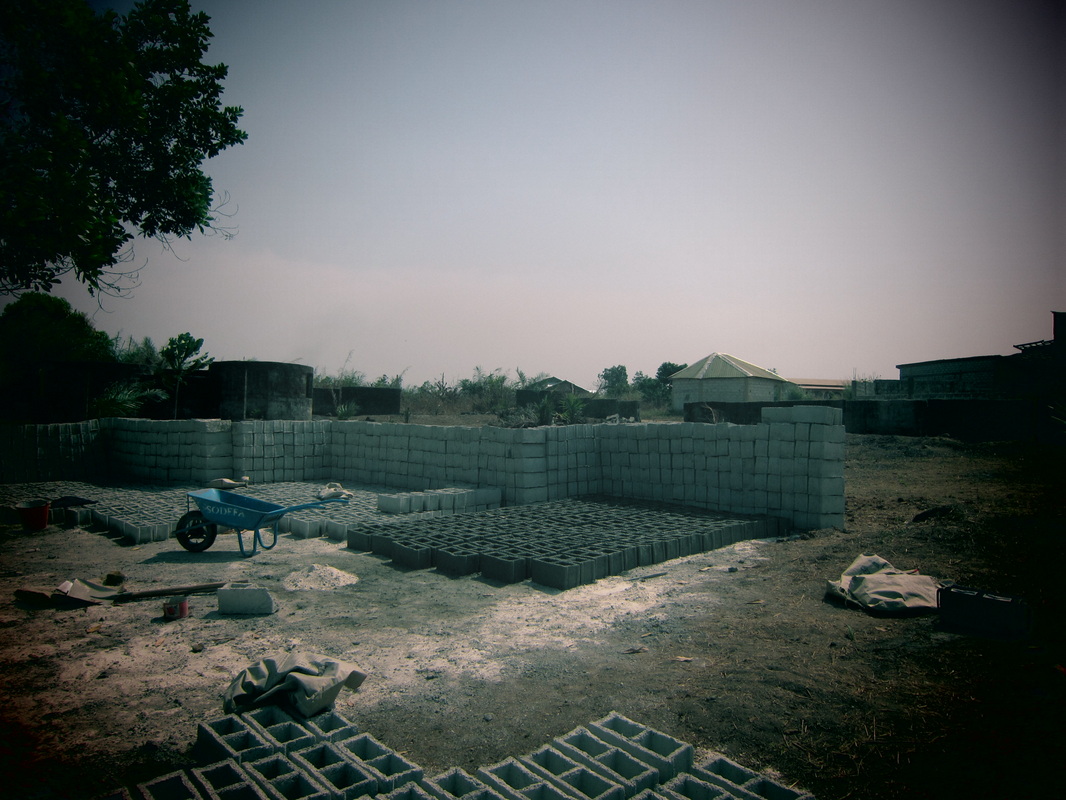
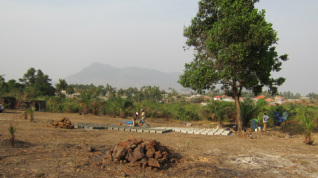
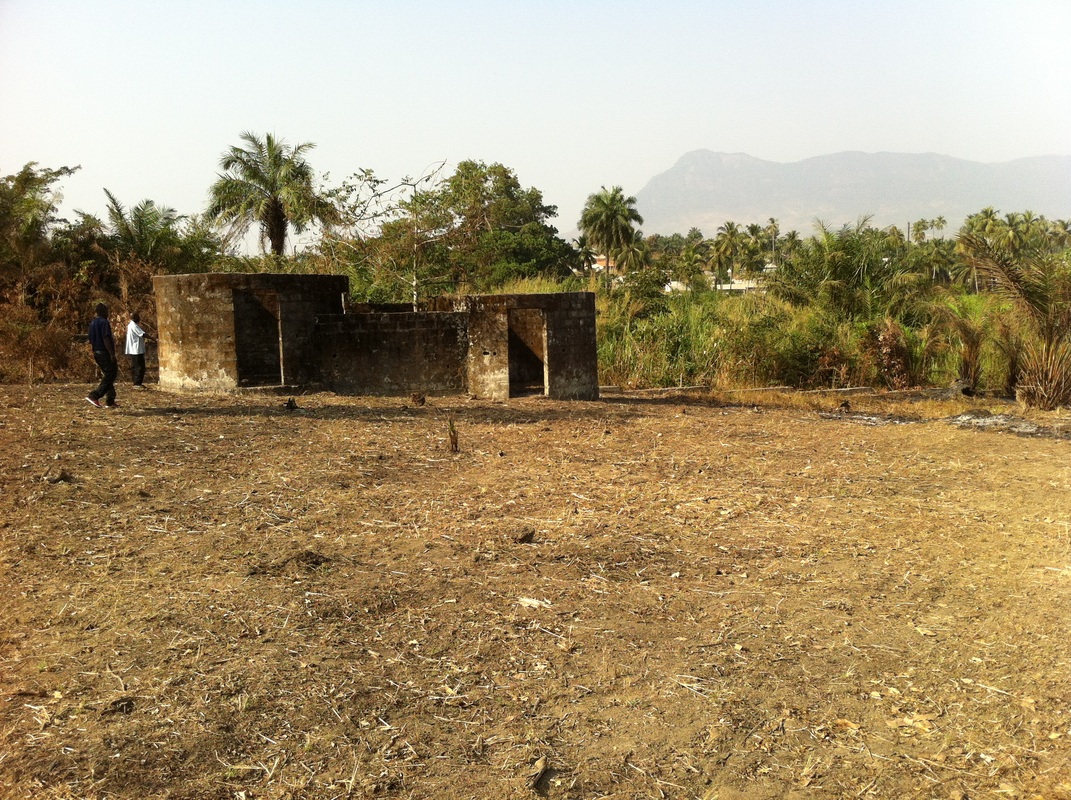


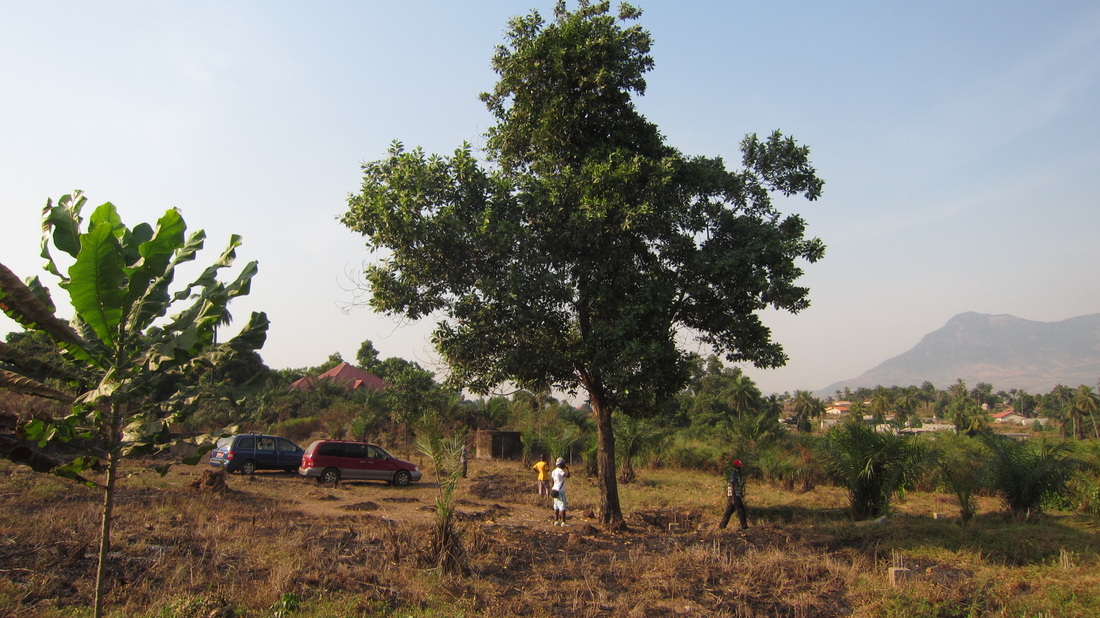
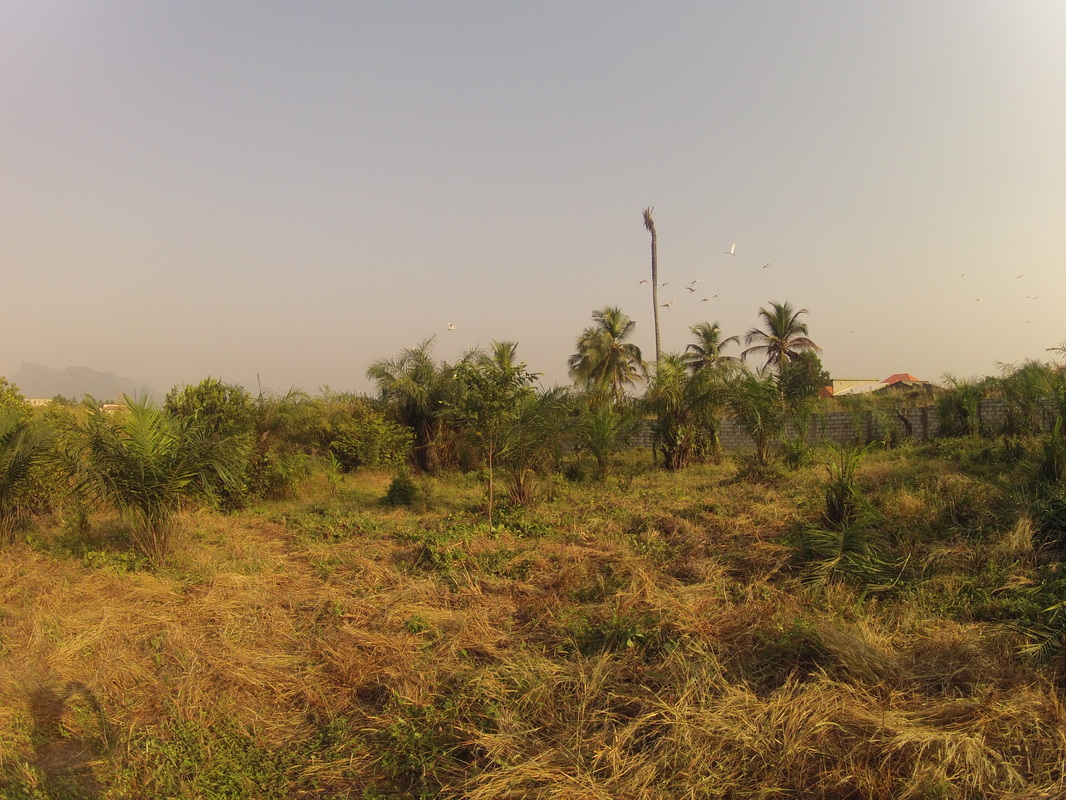
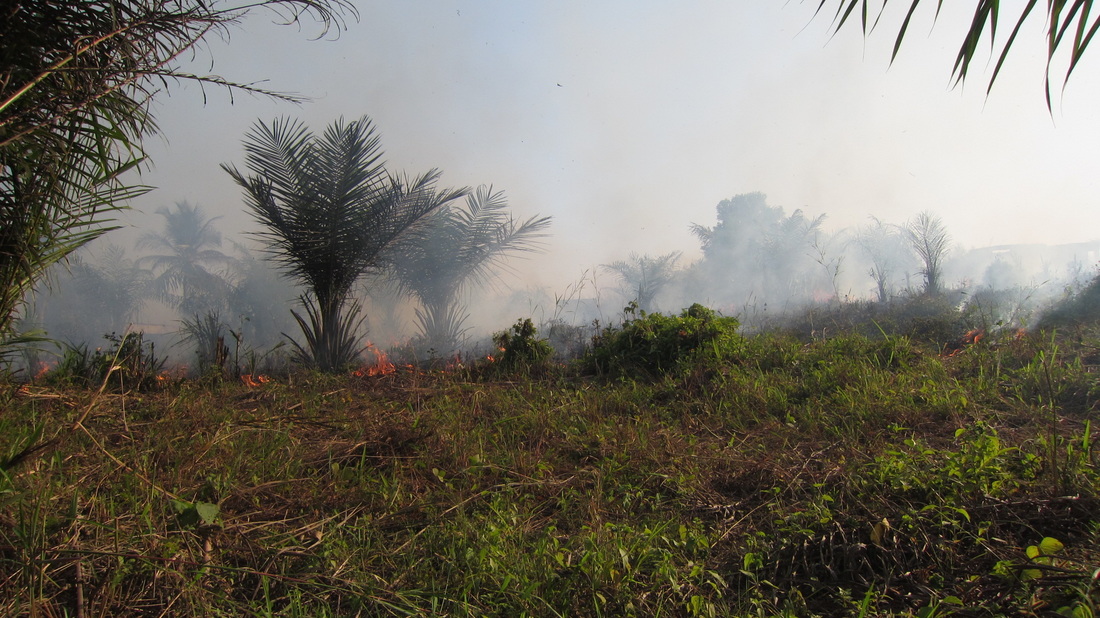
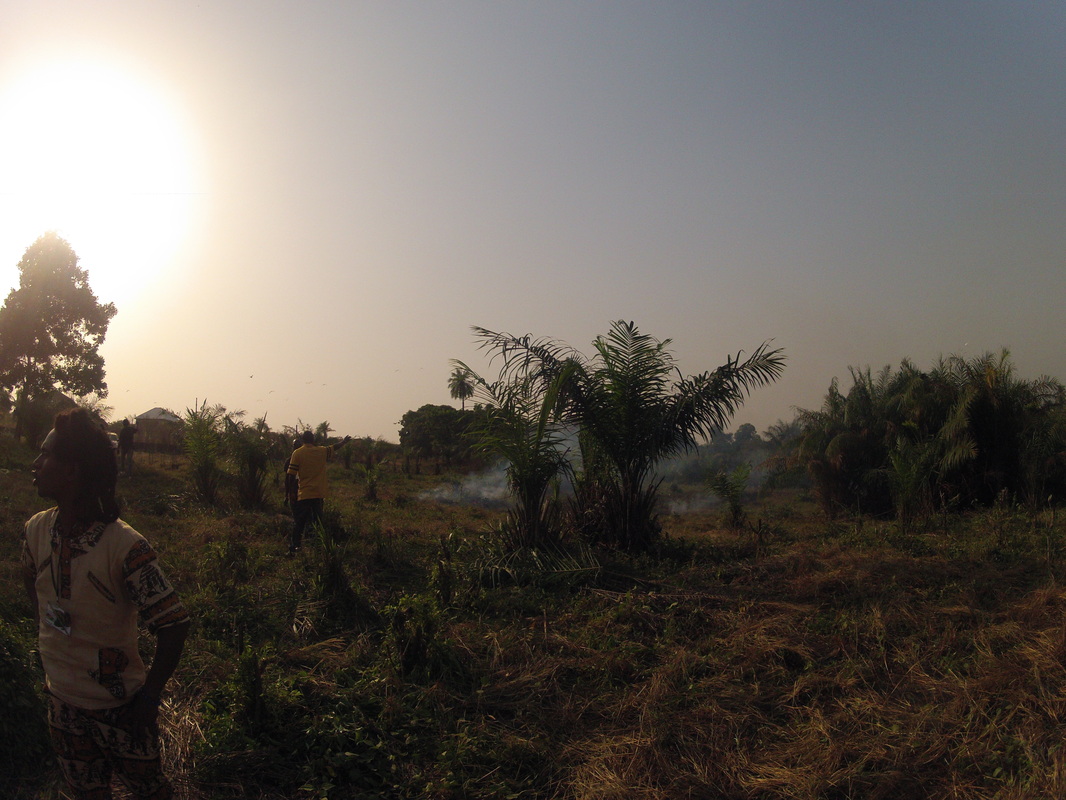
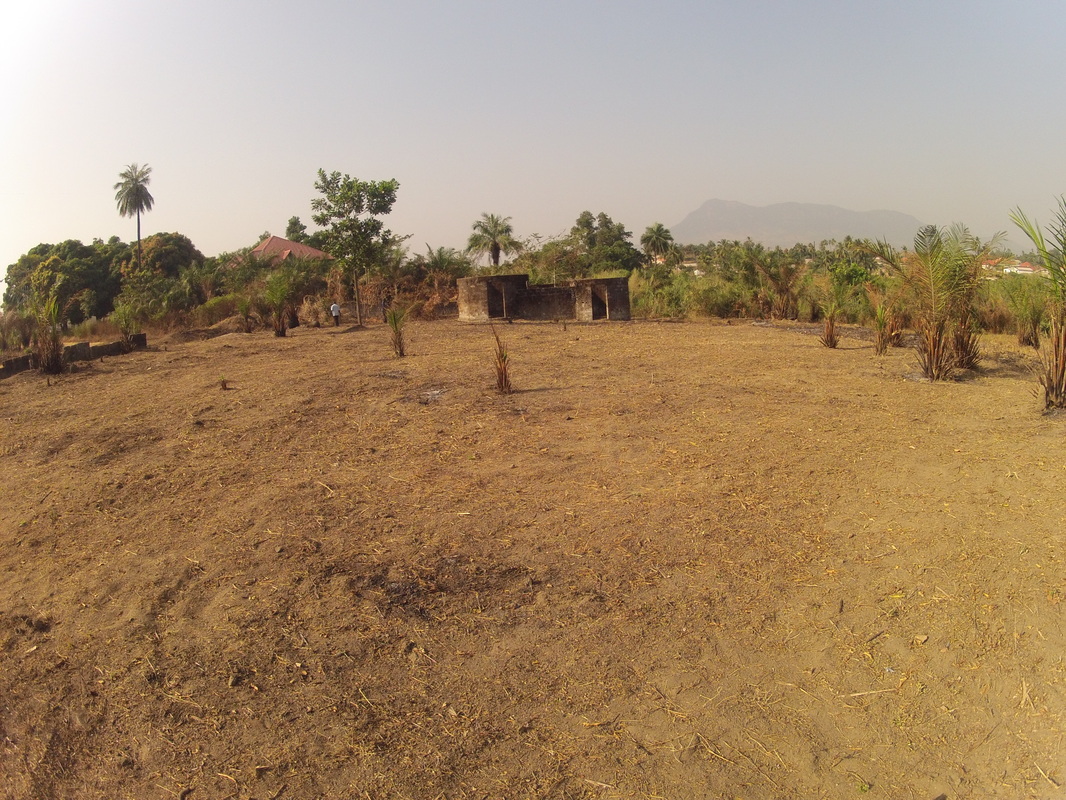

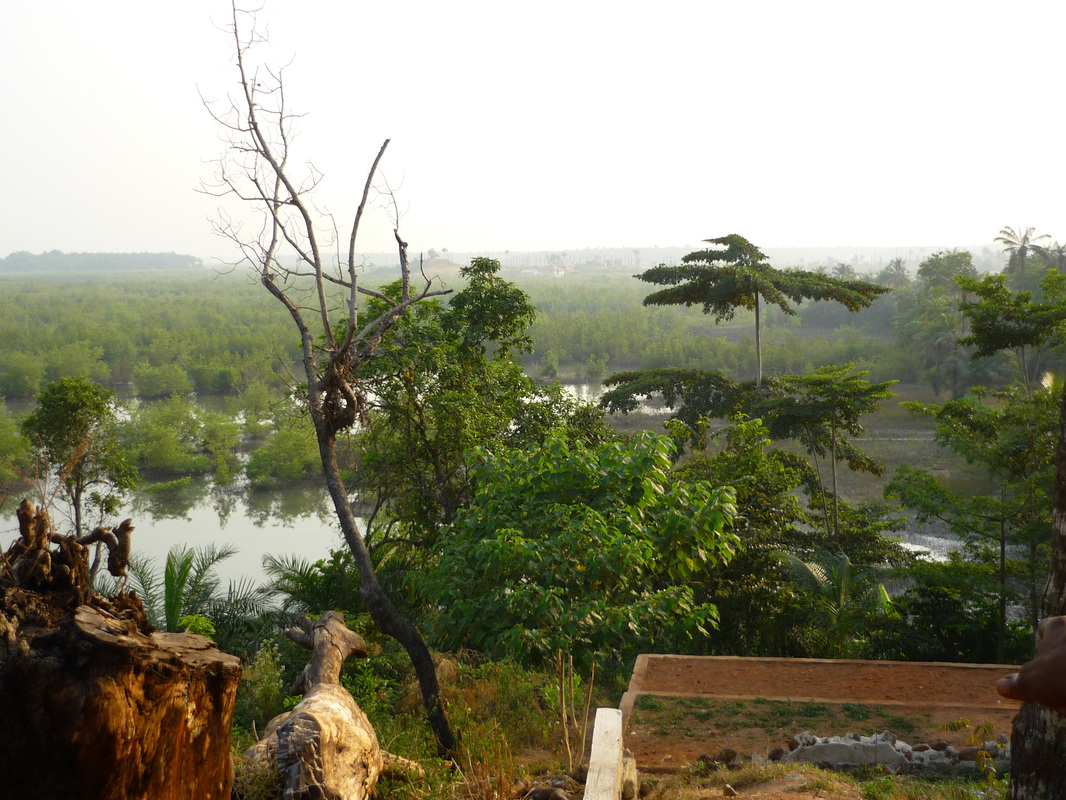
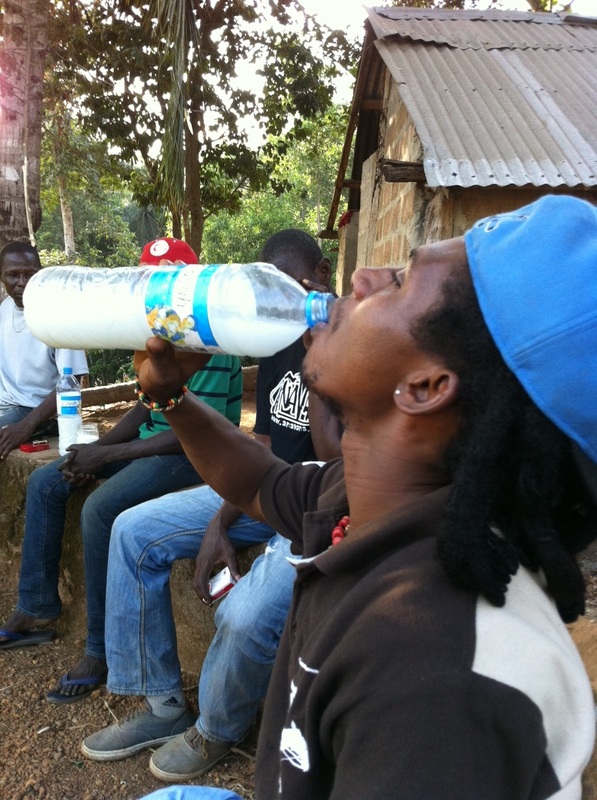
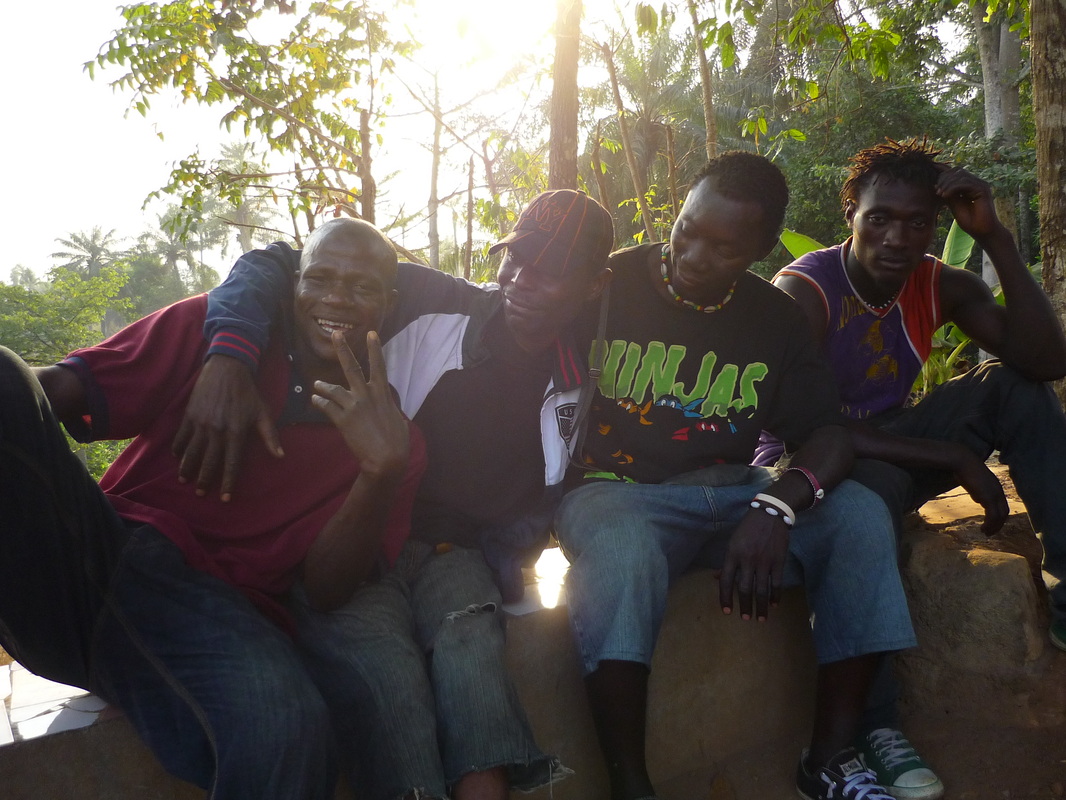
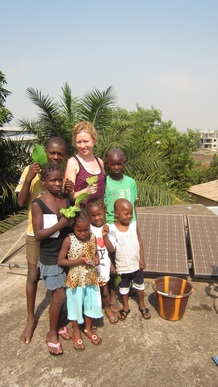
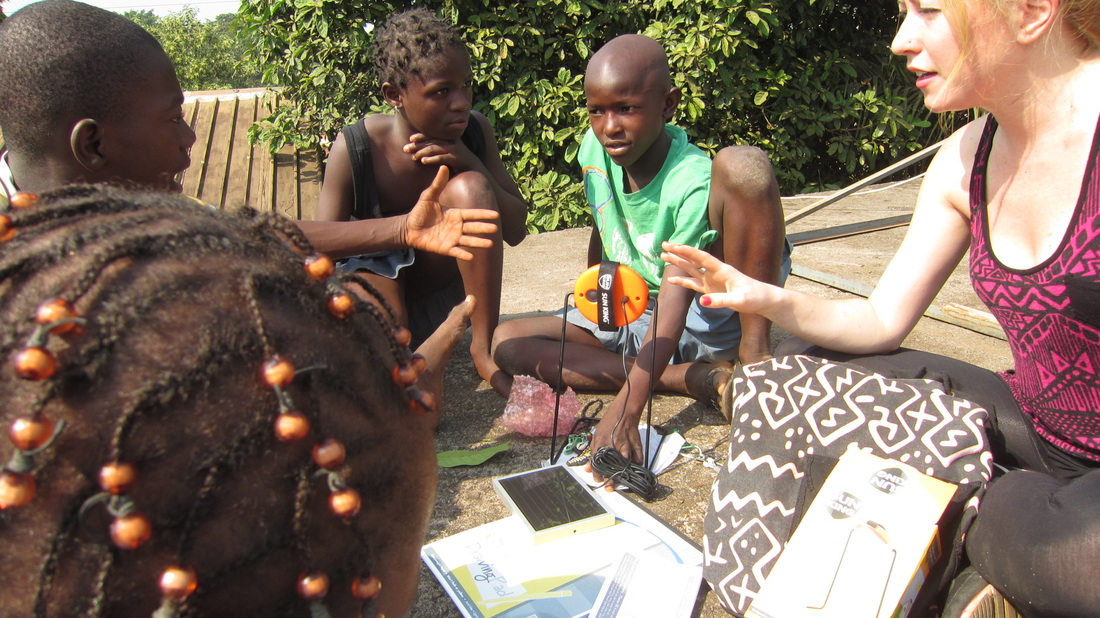
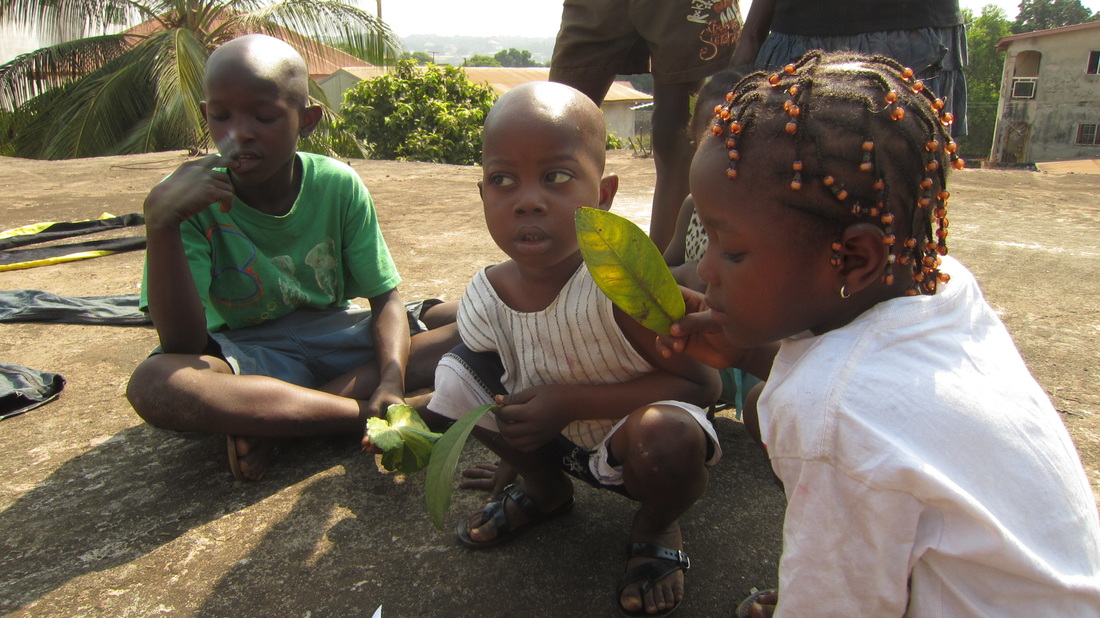
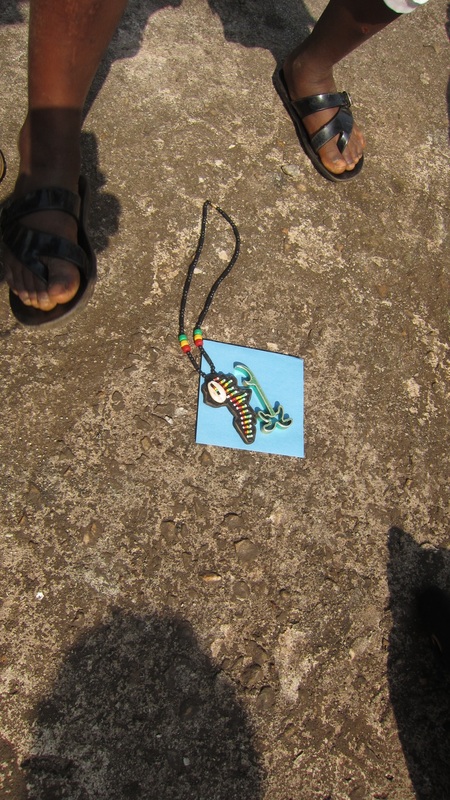
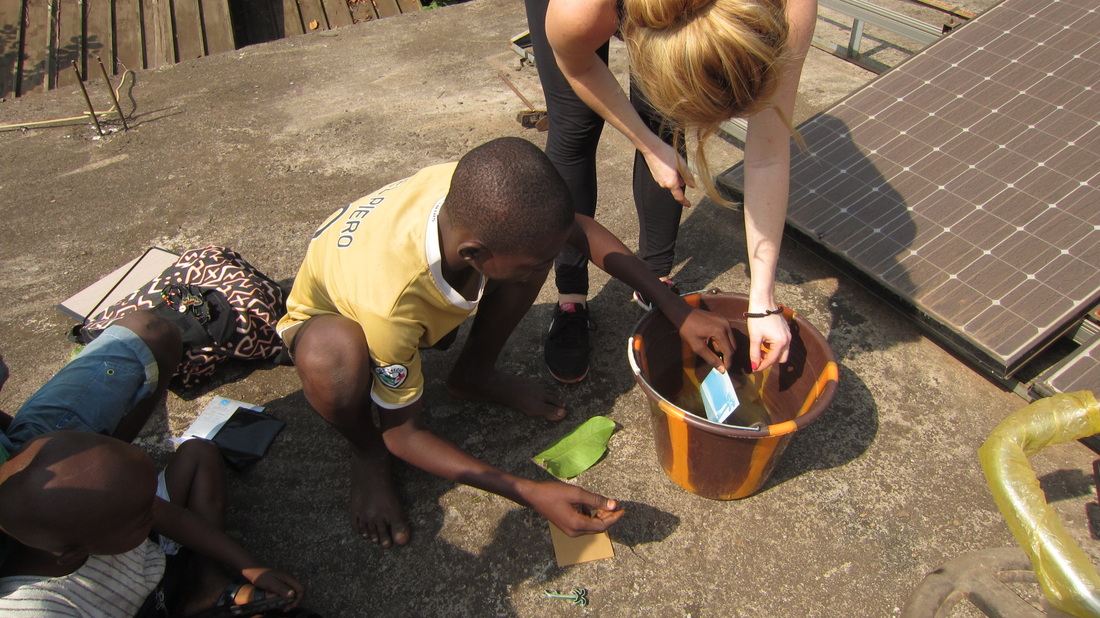
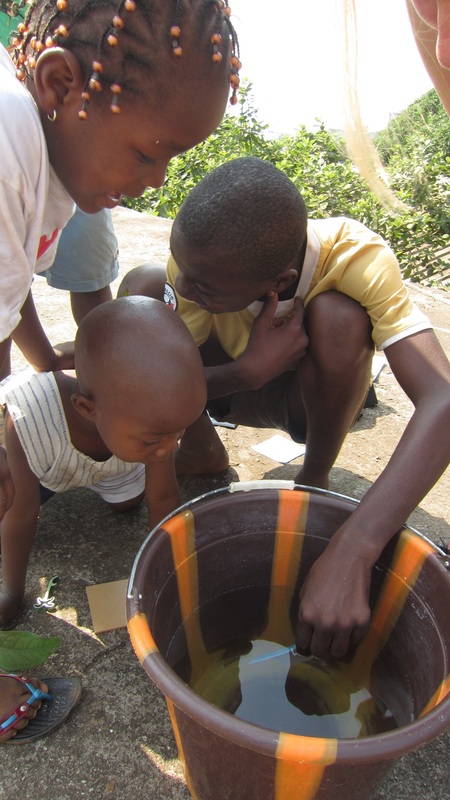
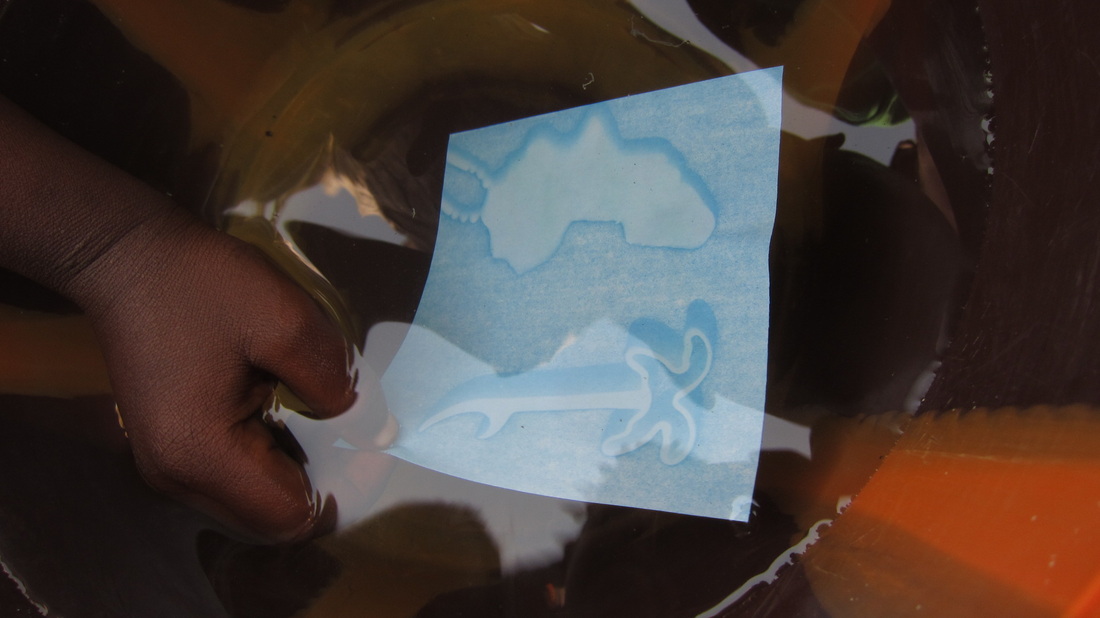
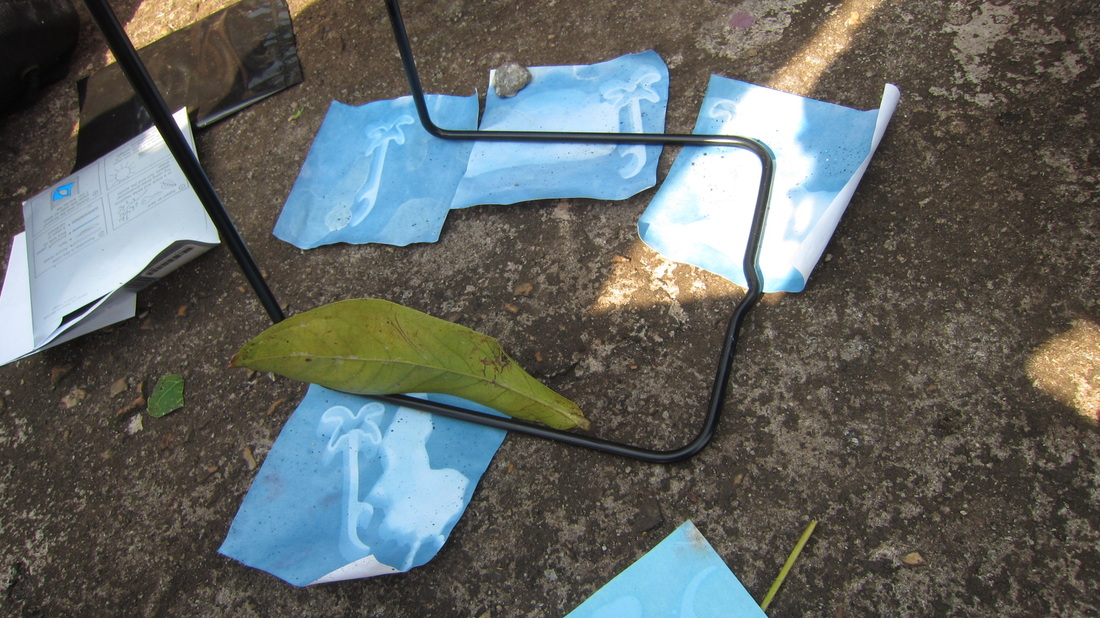
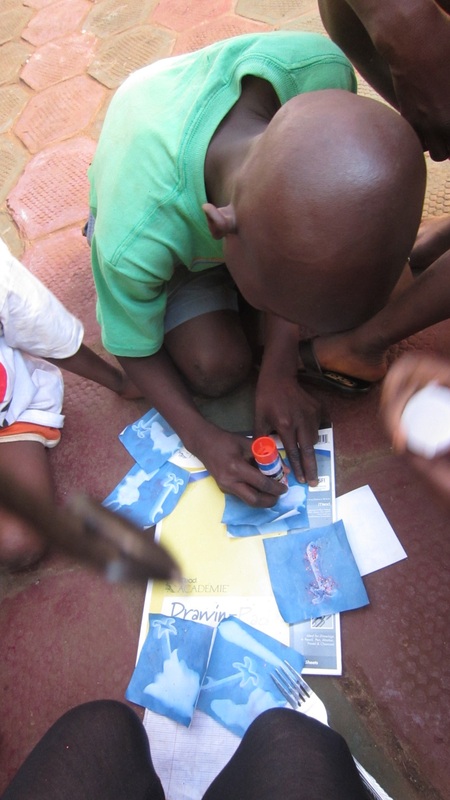
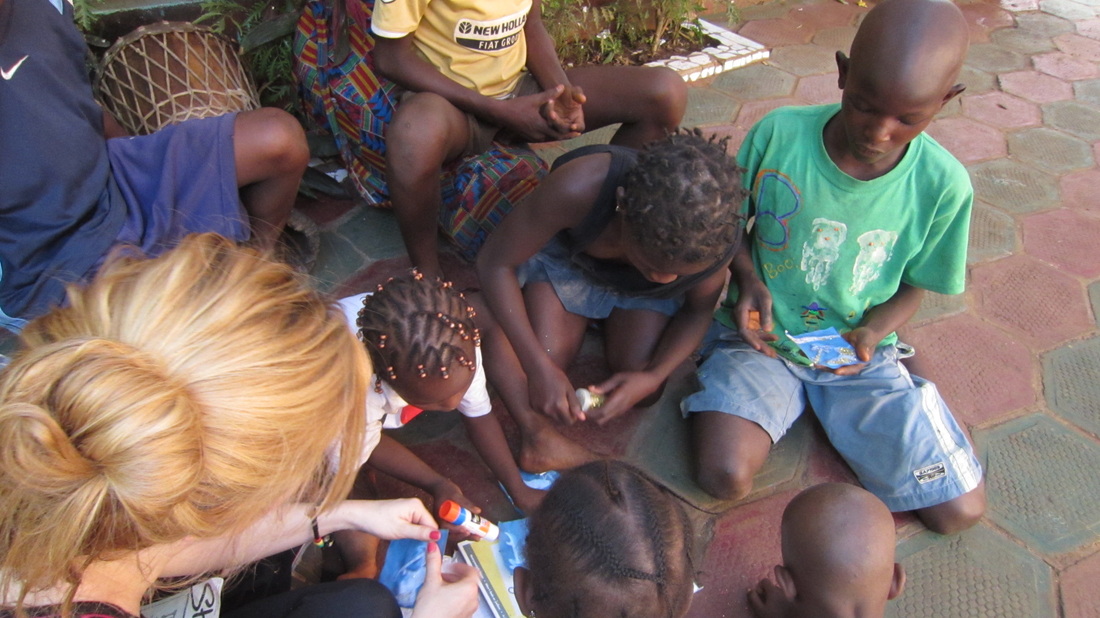
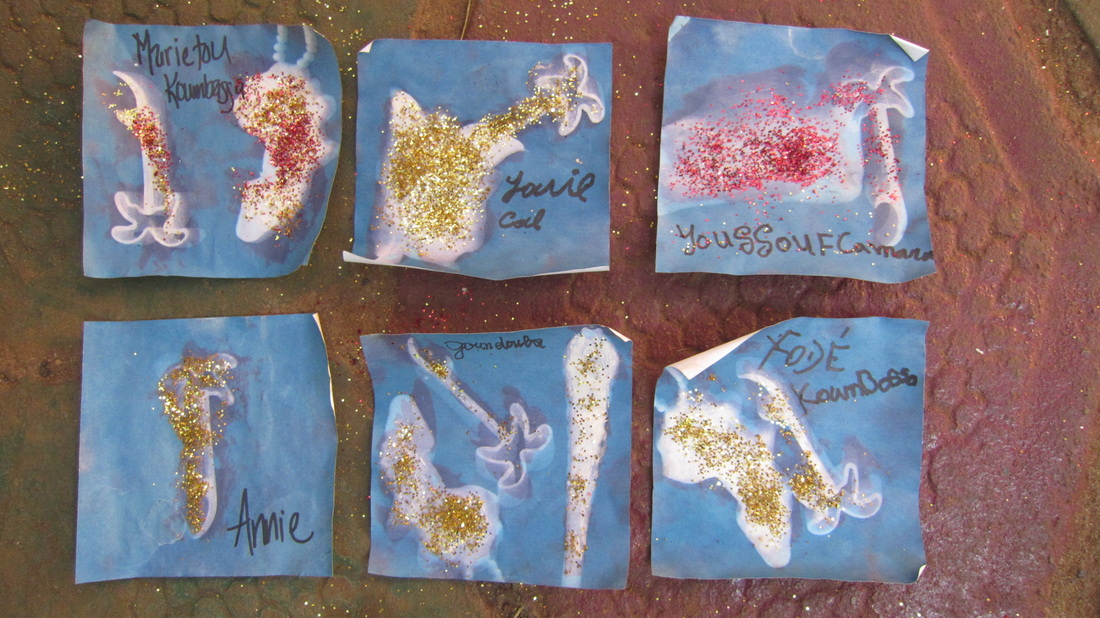
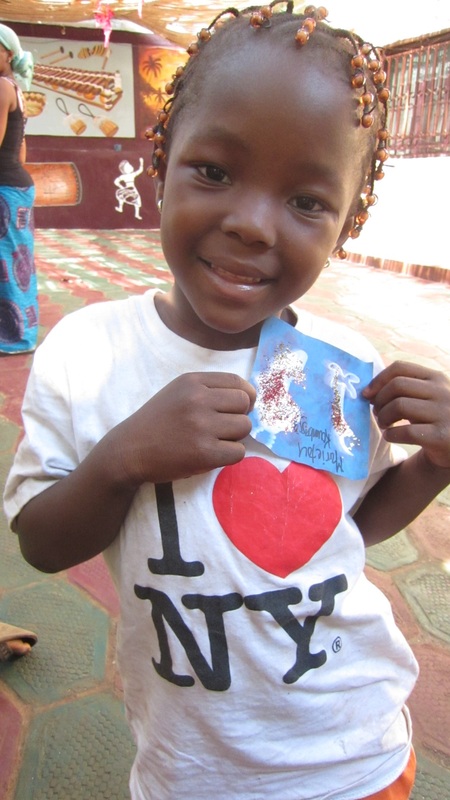
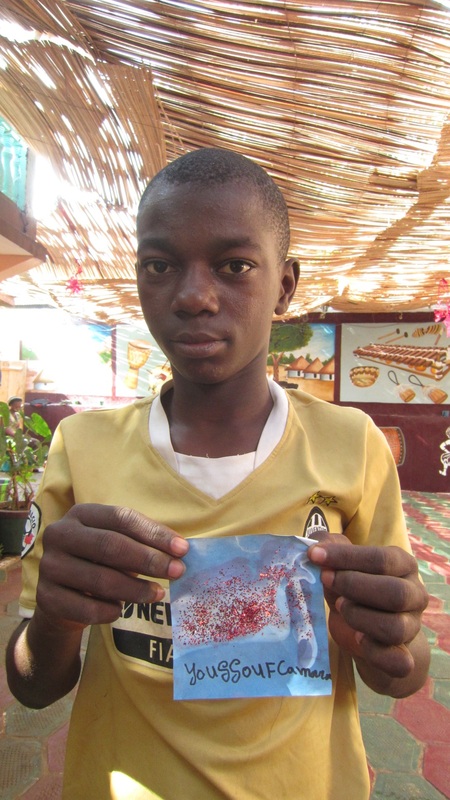
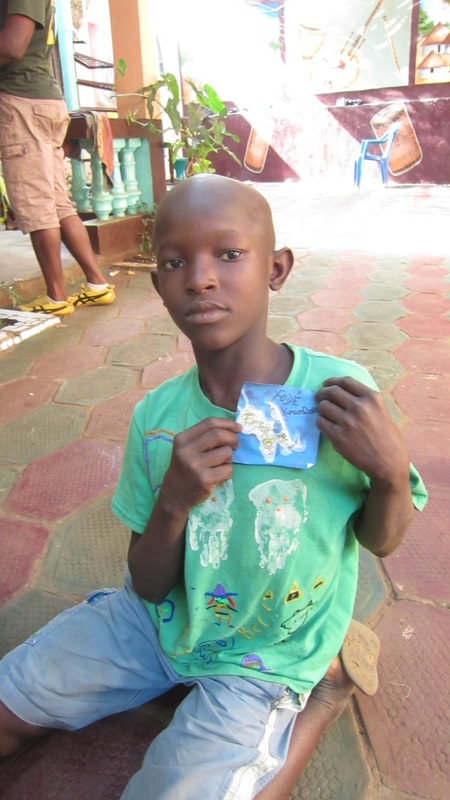
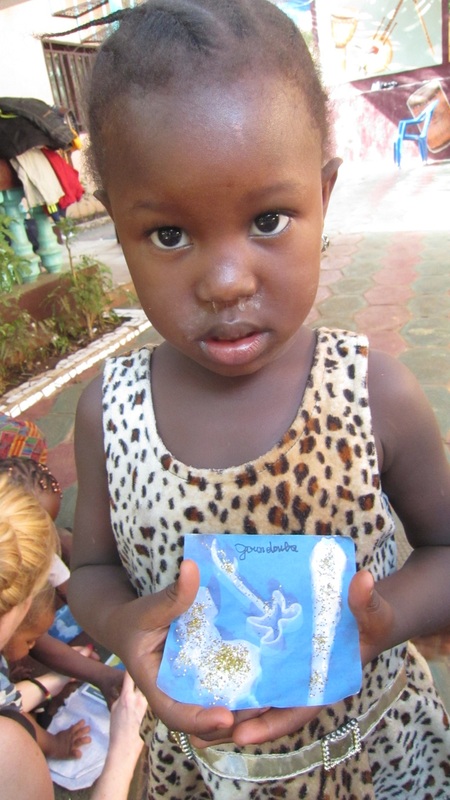
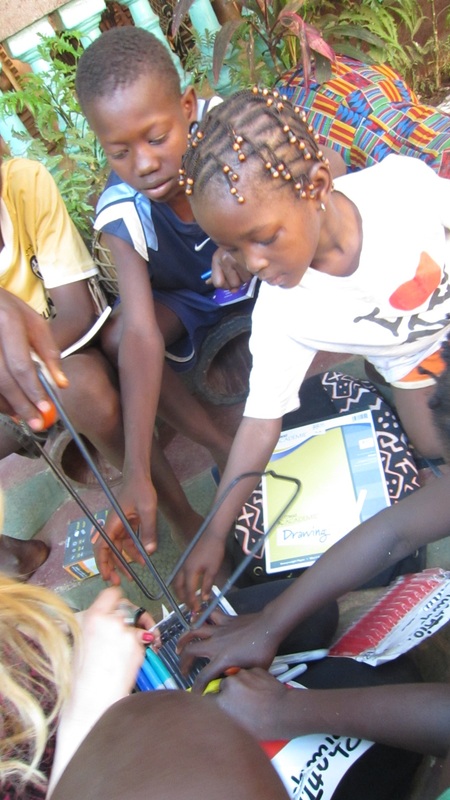
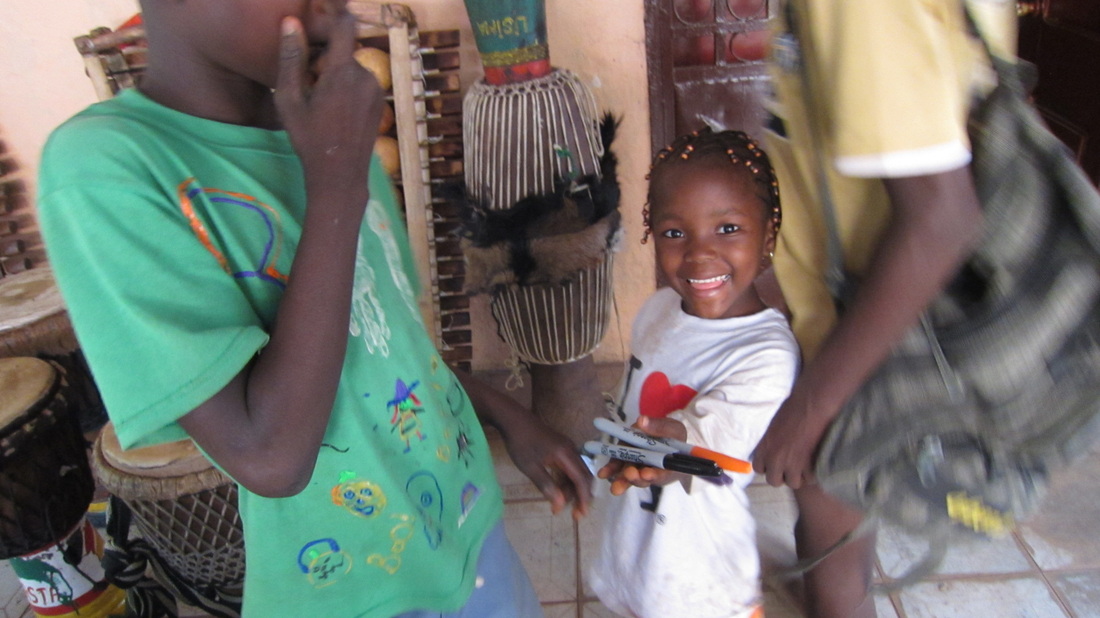
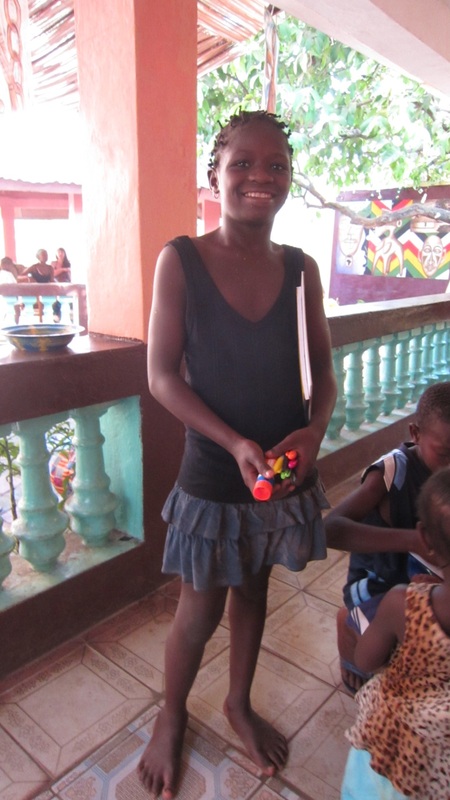
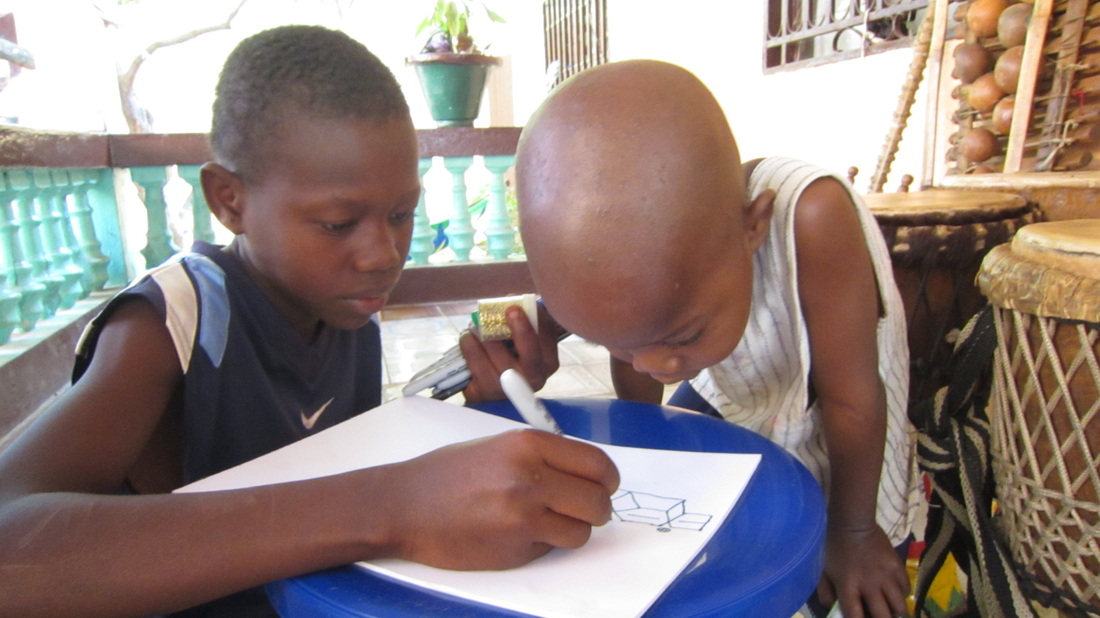
 RSS Feed
RSS Feed